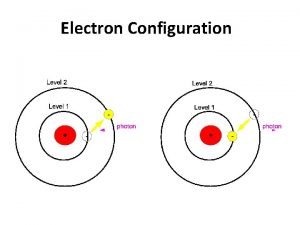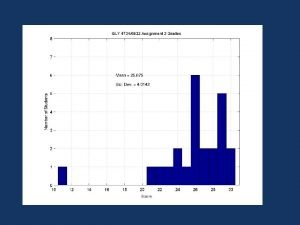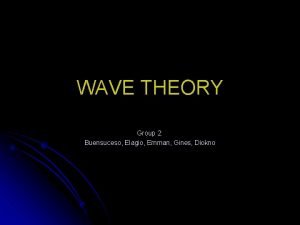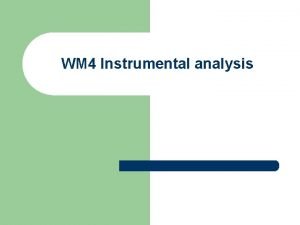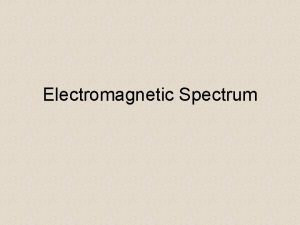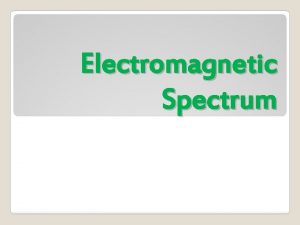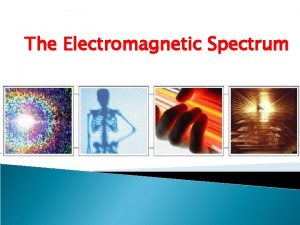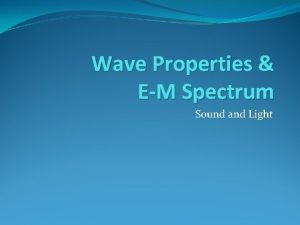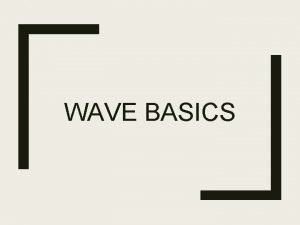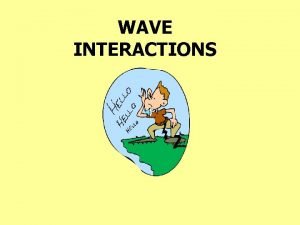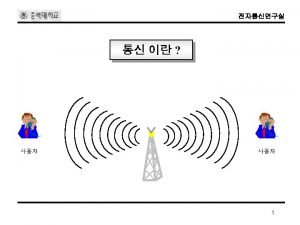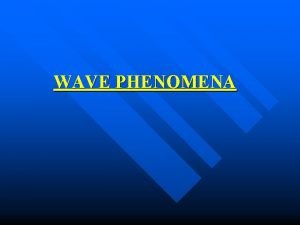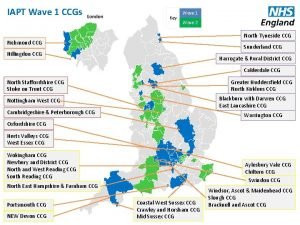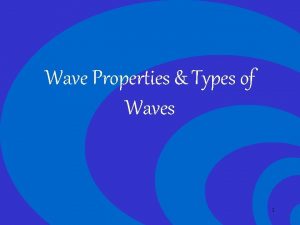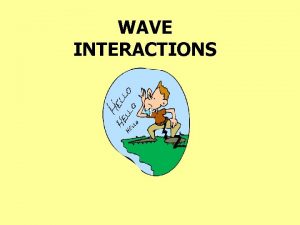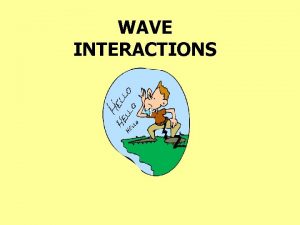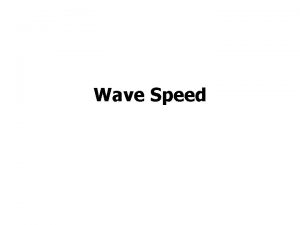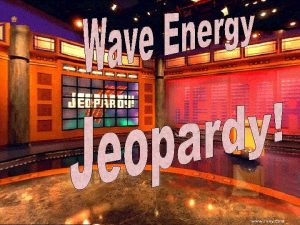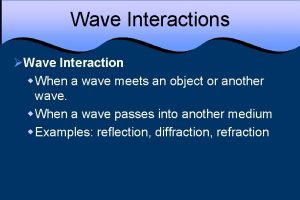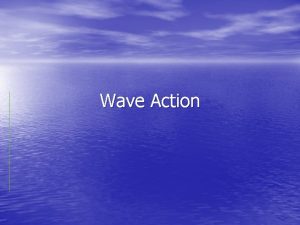EM Spectrum EM Wave Theory EM Wave Theory

























- Slides: 25

EM Spectrum

EM Wave Theory

EM Wave Theory Simplifications: • Conductors: s>>we • Dielectrics: s<<we

Conductors and Dielectrics • • • Skin depth = SQRT (2/wms) Wave speed = SQRT (2 w/ms) Wavelength = 2 p SQRT (2/wms) • Note - ms are together • • • Skin depth = 2 SQRT (e/m) / s Wave speed = 1 / SQRT (me) Wavelength = 2 p / w SQRT (me) • Note - e appears here

EM Spectrum • GPR frequencies – Lowest ~80 MHz • sees deepest— ~30 m • but poor rez. – Highest ~1200 MHz • Shallow— ~10 cm • High rez

Monitoring Remediation: GPR

Monitoring Remediation: GPR

GPR

GPR Antennas 100 Mhz • – (lair= 300 cm) 200 MHz • – ( 150 cm) 500 Mhz • – ( 60 cm) 900 Mhz • – ( 33 cm)

Dielectric constant, K • permittivity e = K eo where • K=1 • =4 • =6 • = 20 • = 81 eo = 1/36 p x 10 -9 sec/ohm-m air gasoline dry sand wet sand water V = 30 cm/ns = 15 = 12. 25 = 6. 7 = 3. 33


Gasoline Spill at OGI

OGI Test Tank

• Pre-spill • 12 hrs • 24 hrs • 36 hrs • 48 hrs OGI Line E 6: hours 0 -48

• 48 hrs OGI Line E 6: Hours 48 -95 • 60 hrs • 72 hrs • 84 hrs • 96 hrs

• 108 hrs OGI Line E 6: Hours 108 -158 • 120 hrs • 132 hrs • 144 hrs • 158 hrs

Things to notice • Gasoline spreads in fingers, maybe reflecting microtextures in the sand. • The fingers wax (and wane? ) as heads build up at the source. They pulse outward. • (Not shown) A repeat survey done the following spring showed bright spots (gas pockets) scattered at different depths.

Problem: Why bright spots? • Jeff Daniels and his students at Ohio State have studied many LNAPL spills in the Midwest. They find that GPR reflections are almost always dim or absent over gasoline spills. • Why was my result (in Oregon) different from his (in Illinois, Indiana, and Ohio)?



Dave. C at Coeur d’Alene

Borehole GPR in a boat

CDA GPR - profile

CDA GPR - Interp

GPR Characteristics • 80 -1200 MHz • Uses true EM reflections • Textures, petrochemicals, UXO. . . • High rez (~10 cm) • Fast ( km/hr) • Can work near cultural noise • Maximum depth penetration <~30 m • Can’t penetrate conductive ground (>~30 m. S/m) – clays – brackish porewaters • Realistic sections
 Explain electronic configuration of cu and cr
Explain electronic configuration of cu and cr Absorption spectrum
Absorption spectrum The electromagnetic spectrum song lyrics
The electromagnetic spectrum song lyrics Wavelengths of electromagnetic spectrum
Wavelengths of electromagnetic spectrum Em waves spectrum
Em waves spectrum Longitudinal wave vs transverse wave
Longitudinal wave vs transverse wave Long waves and short waves
Long waves and short waves Difference between full wave and half wave rectifier
Difference between full wave and half wave rectifier Longitudinal vs transverse waves
Longitudinal vs transverse waves Half wave rectifier definition
Half wave rectifier definition Full wave rectifier transformer
Full wave rectifier transformer Determining the arrival times between p-wave and s-wave
Determining the arrival times between p-wave and s-wave Full wave rectified sine wave fourier series
Full wave rectified sine wave fourier series What is a wave
What is a wave Wave wave repeating
Wave wave repeating Half wave symmetry fourier series
Half wave symmetry fourier series Venn diagram of mechanical and electromagnetic waves
Venn diagram of mechanical and electromagnetic waves Example of mechanical waves
Example of mechanical waves Velocity frequency wavelength triangle
Velocity frequency wavelength triangle Airy wave theory
Airy wave theory Wave theory of light
Wave theory of light Groundhog day 2021
Groundhog day 2021 Salicylic acid ir spectrum peaks labeled
Salicylic acid ir spectrum peaks labeled Spectrum mi plan latino
Spectrum mi plan latino Spectrum mi plan latino
Spectrum mi plan latino Morbidly obese bmi
Morbidly obese bmi




